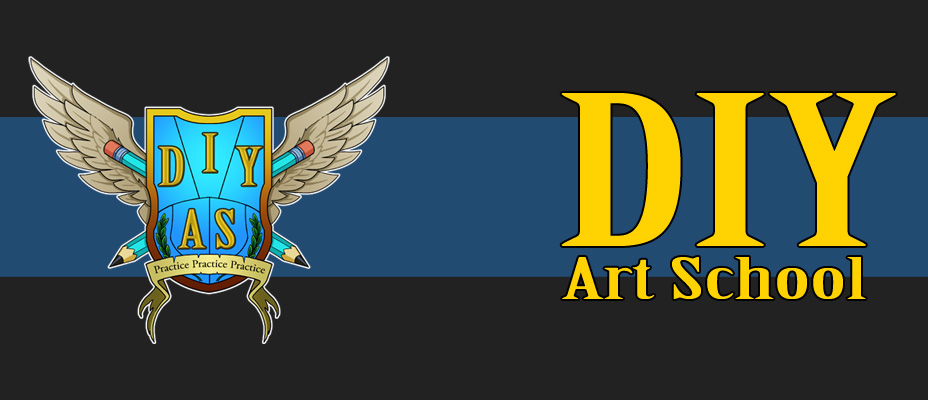If you’ve been following along with my suggestions on creating a DIY Art School experience, there’s one thing noticeably absent- Grades. You know, that little report card that tells you how you are doing? I hope you didn’t think you’d be getting off easy, and that there would be no grades to worry about. Haha, no such luck.
In fact, these grades are the only ones that matter, and they are in fact, scarier than “real” grades. You see, in art school, you can tunnel vision a bit and trick yourself into believing that grades are the goal. They aren’t of course. Progress and reaching a professional level is the goal, and THAT’S the only meaningful measure, and it’s the one we’ll be using.
Ok, so we’re not talking about actual letter grades, or actual report cards here, but we are talking about intent behind report cards. Getting that feedback on where you have been successful, where you need more work, and some insight into the places you didn’t even know you had a problem. In art circles this is called a critique, or a portfolio review.
Reviews from Peers
Your peers are others at a similar level as you. In art school these would be your classmates. Home study doesn’t leave you much in the way of classmates, so we’ll have to get a little creative.
Locally, you can find peers “out in the field” in a few ways. We’ve already talked about one of them in the article Field Trips, going to life drawing sessions. A regular life drawing class (either with instruction or without) throws you in with other artists. Some may be much more advanced than you, and others may be complete novices giving art a try for the first time. Either way, these may be great people to get to know. When the model takes a break, many artists take the opportunity to stretch their own legs, and see how others are doing with their efforts. This is a natural time to see how others are doing and strike up conversations. Over time, once you’ve gotten to know a few people, you can start asking for a little feedback. Seek out help from those more experienced if they seem open to it. Most artists I know are very happy to help others and pass on what they’ve learned. Try not to take up too much of their time, they are there to draw just like you are, but a little quick feedback can go a long way.
Another possible avenue to find peers is to join a local artist group. If you have a local arts paper you’ll often see listings for all sorts of activities that might be of interest. Your local art store, or possibly a coffee shop, may have a bulletin board where people post things of this nature as well.
The next best thing to finding local people that you can talk to directly, is peer support from online communities. One of my favorites has been Conceptart.org. There, you can post up work you’ve been doing, or even your entire portfolio, and ask for feedback. It may take time, and you may need to spend some time building relationships and “getting your name out there” to start getting more people interested in giving feedback, but the more regularly you post work, and the more you make progress, the more interested others will be in checking in on your progress and commenting and offering advice. Be a good peer yourself, and offer help and advice where you can, or even simple encouragement.
Tomorrow I continue this article with advice on getting reviews from professionals!


No comments:
Post a Comment